Great golf history might not be the first thing that comes to mind when you think of this scenic sector of the Pacific Northwest, but that’s exactly what you will find when you visit – especially in the nearby Tualatin Valley, which covers much of the area.
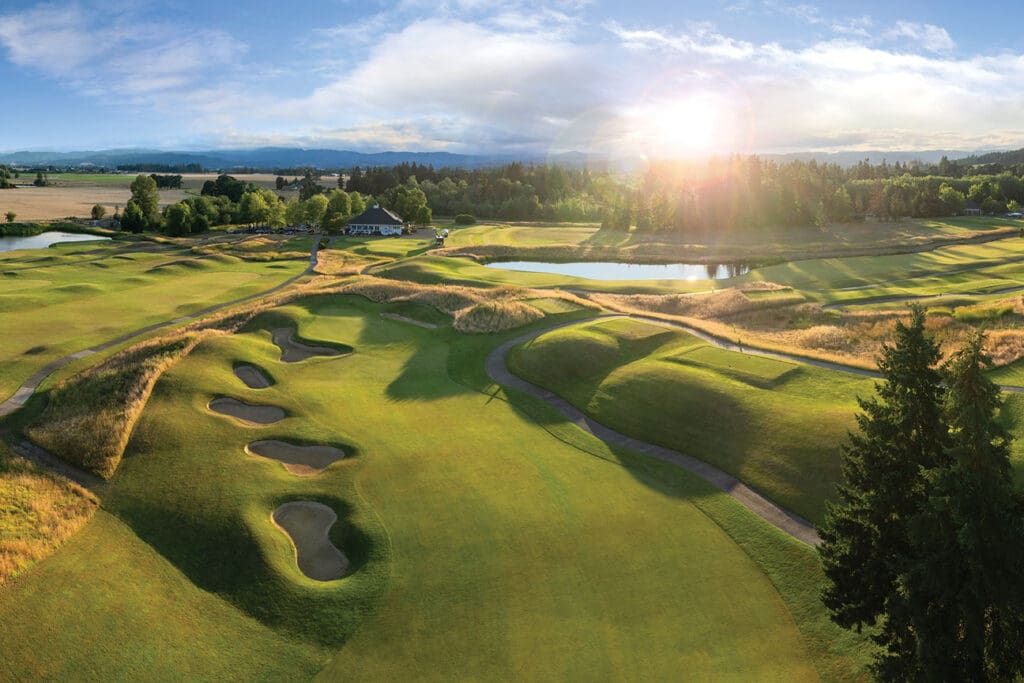
Portland has trees (plenty of trees), lots of water, nearby beaches, fishing, its fair share of counterculture, and more than its share of walking and athletic shoes, thanks to being the corporate headquarters of Nike.
But if you want history, we’ve got golf history right here.
Consider the revival of the Ryder Cup after a 10-year World War II break, staged at exclusive Portland Golf Club in 1947. With countries still recovering from a wartime mindset, organizers needed an out-of-the-way place that was eager to showcase the return of international competition.
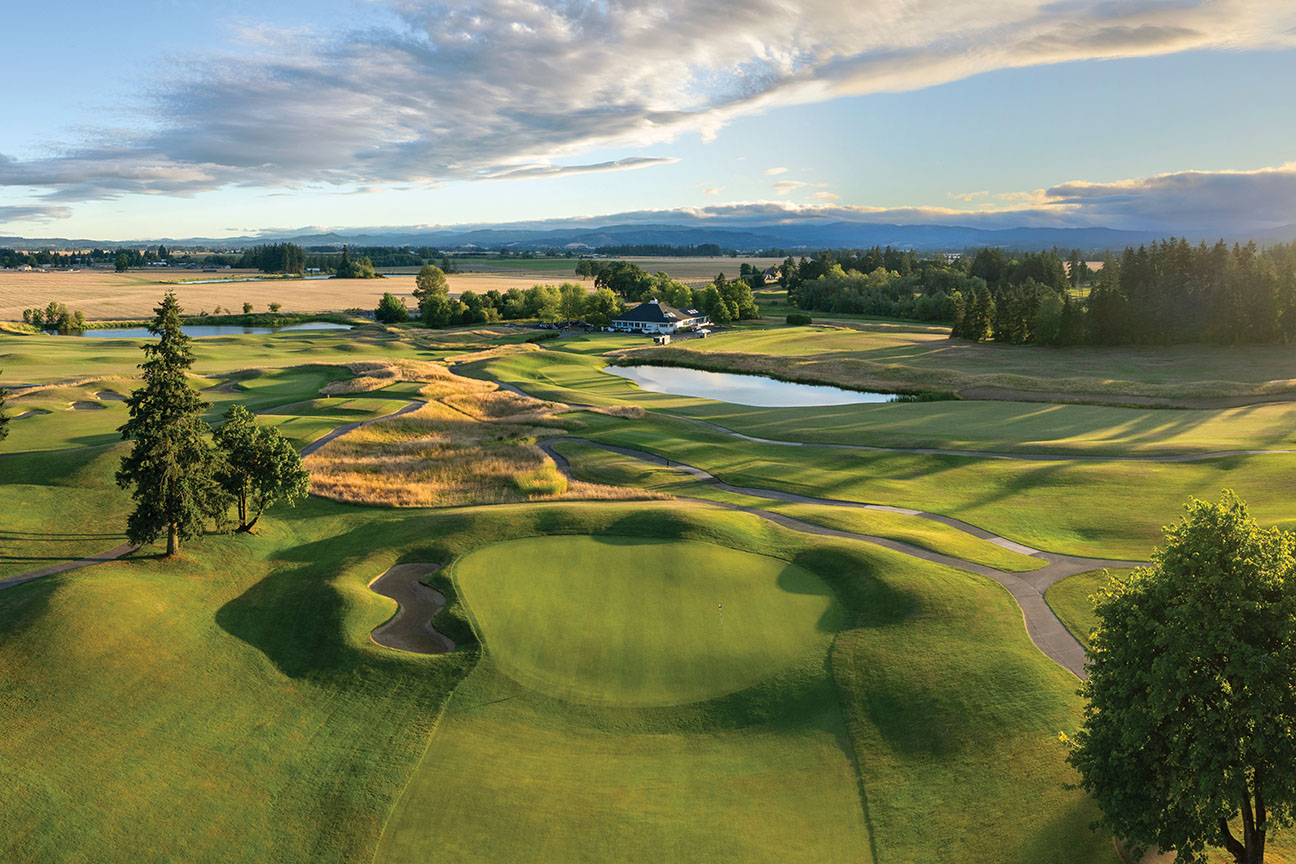
That’s exactly what they got at Portland Golf Club, as the Americans – led by Texans Byron Nelson and rookie Ben Hogan, playing in his first Ryder Cup – led the U.S. to an 11-1 victory. That win sparked the event’s return as one of golf’s biggest spectacles, as fans saw this September at Bethpage Black.
It’s worth the drive to Portland Golf Club, even if you can’t talk your way onto the first tee, to see the historic layout and the grounds near downtown.
Oregon Ducks head coach and former groundbreaking pro Casey Martin is a member, and he regularly brings his powerhouse UO golf team to practice here.
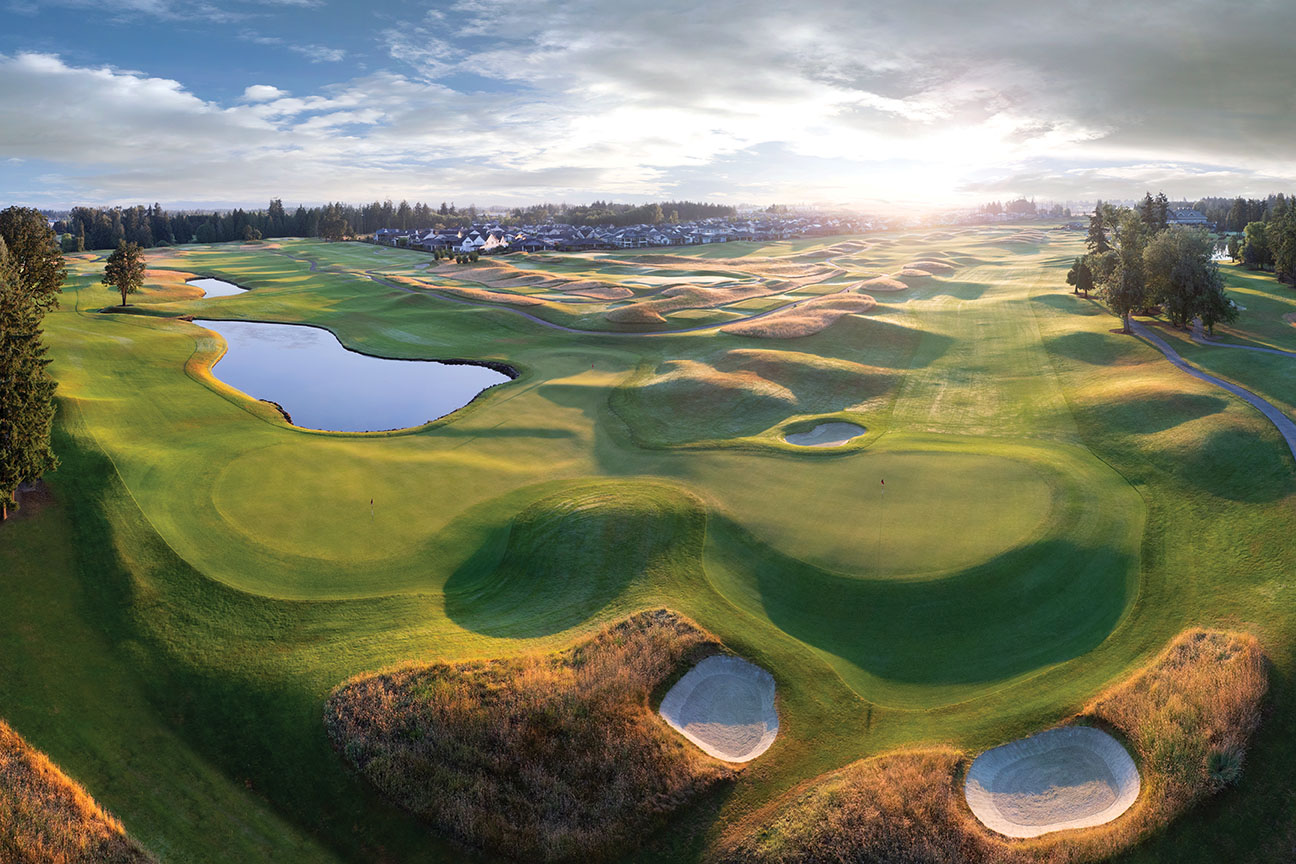
There is more history at nearby Pumpkin Ridge Golf Course in suburban North Plains, where Tiger Woods won the third of his three straight U.S. Amateur titles (six straight counting his three U.S. juniors). In 1996, Woods staged a dramatic comeback over Florida’s Steve Scott, winning on the second extra hole after 36 holes of regulation.
Pumpkin Ridge also hosted two U.S. Women’s Opens. The first, won by little-known Alison Nicholas, who broke the heart of perennial runner-up Nancy Lopez with a final-hole par. Add both a women’s and men’s U.S. Junior plus a women’s amateur, and you’ve got a championship pedigree like no other in these parts.
More recent history comes from the 36-hole North and South Course at the Reserve Vineyard & Golf Club, longtime home of a Champions Tour event.
On the South Course, Tom Watson shot a course-record 62 to beat Texan Tom Kite by one stroke in 2003. The Reserve also hosted the Fred Meyer Challenge, which brought golf legends like Jack Nicklaus, Arnold Palmer, Tiger Woods, Lee Trevino, and Phil Mickelson to plat in the two-man event – and to thrill fans at a famous pre-round clinic.
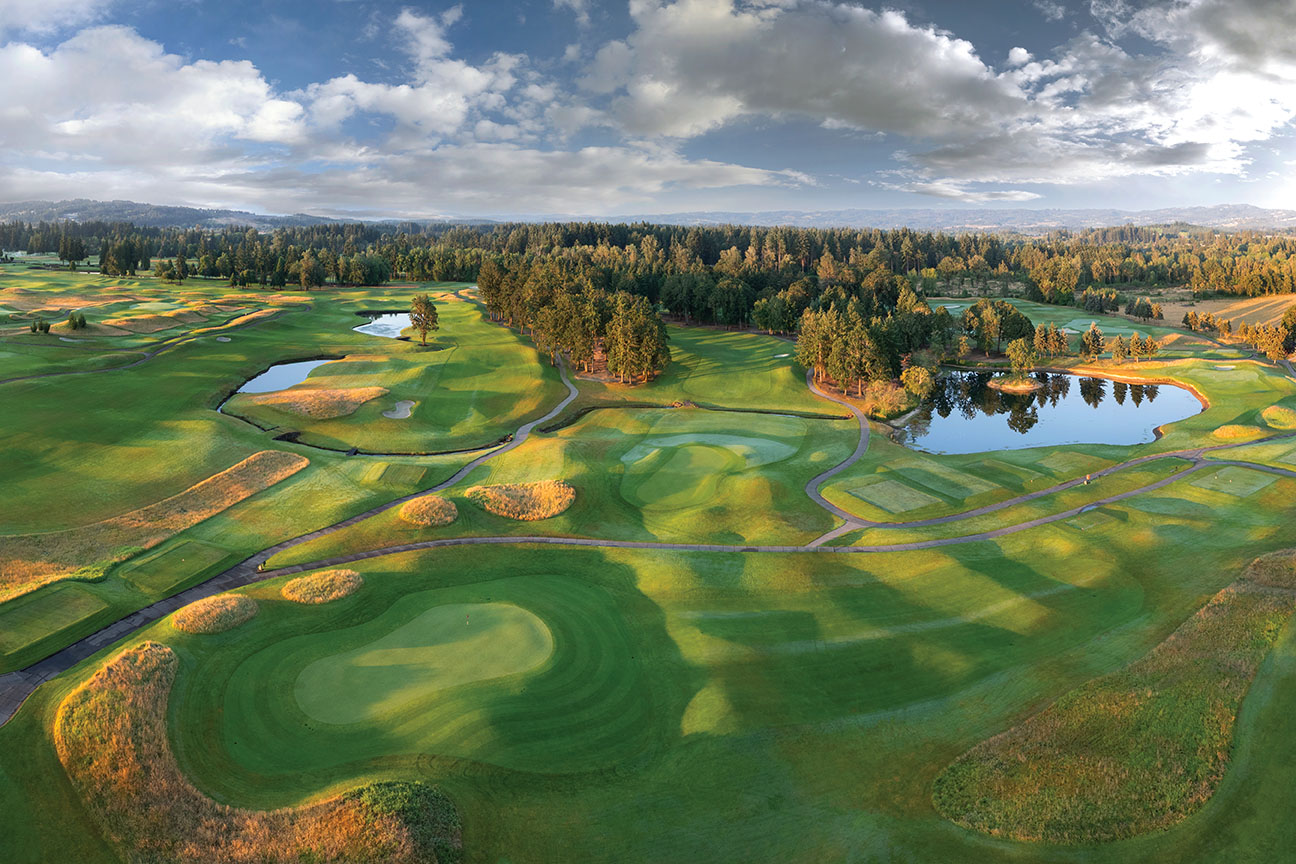
There is history of a different kind at the public, par-72 Meriwether National Golf Club. It exists not for great tournaments or players, but for the sheer joy of the game. Loyal groups of golfers come here for the scenic surroundings and familiar sights and sounds. That means it’s packed most afternoons, with prices considerably lower than you’ll find at most courses of this quality.
As Gary Player once said, Meriweather National is ‘the finest of its kind.’
One thing golf does better than almost any other sport is offer the chance to walk in the footsteps of legends. That’s certainly the case with historic Portland golf.
Before you play Pumpkin Ridge – operated by Texas powerhouse Escalante Golf – a pre-round lunch or breakfast is a must. Step into the Champions Grill, behind the 10th tee of the Ghost Creek course, and you’ll see huge photos on the wall of past champions who played here.
At the right angle, you’ll see a jumbo-sized Tiger Woods staring down another birdie putt – while you order your bacon cheeseburger with homemade chips.
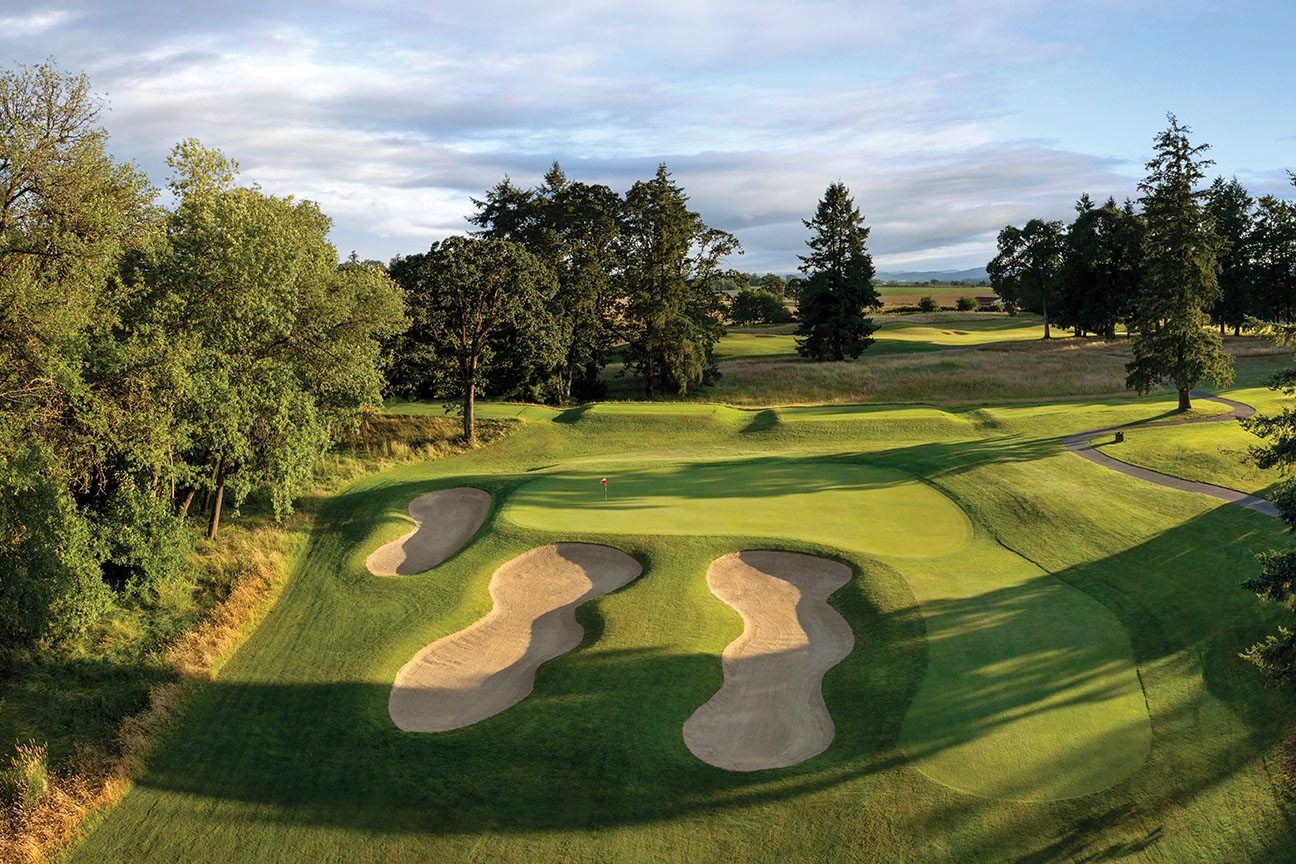
Ghost Creek is the gentler of the two courses and gets more public play. Many fairways are tree-lined on both sides, making accuracy off the tee a real asset. There are plenty of bunkers and sloped greens, but the par-71 layout by Cupp still offers chances for pars and birdies. It plays 6,834 yards from the back tees and considerably shorter from the proper tees.
Of course, water comes into play on both the par-4 ninth and 18th holes at Ghost Creek. They can sink any promising round – and send you back to the grill for something much stronger.
The Witch Hollow side, where Woods worked his U.S. Amateur magic, includes a private membership component and is the tougher 18 – playing to par 72 and stretching over 7,000 yards from the back tees. The fairways are narrower, water comes into play on many holes, and some green complexes are downright dangerous – sloping into water, stone walls or thick rough on a misplaced approach.
But playing where golf’s great have played is worth the pain. A marker on the par-3 10th shows where Woods ended his match with Scott and entered golf history.
One of the coolest things in the pro shop is a replica of the hat Tiger Woods wore when he won his third straight U.S. Amateur. It has the USGA/U.S. Amateur logo on the front and the Pumpkin Ridge logo on the side.
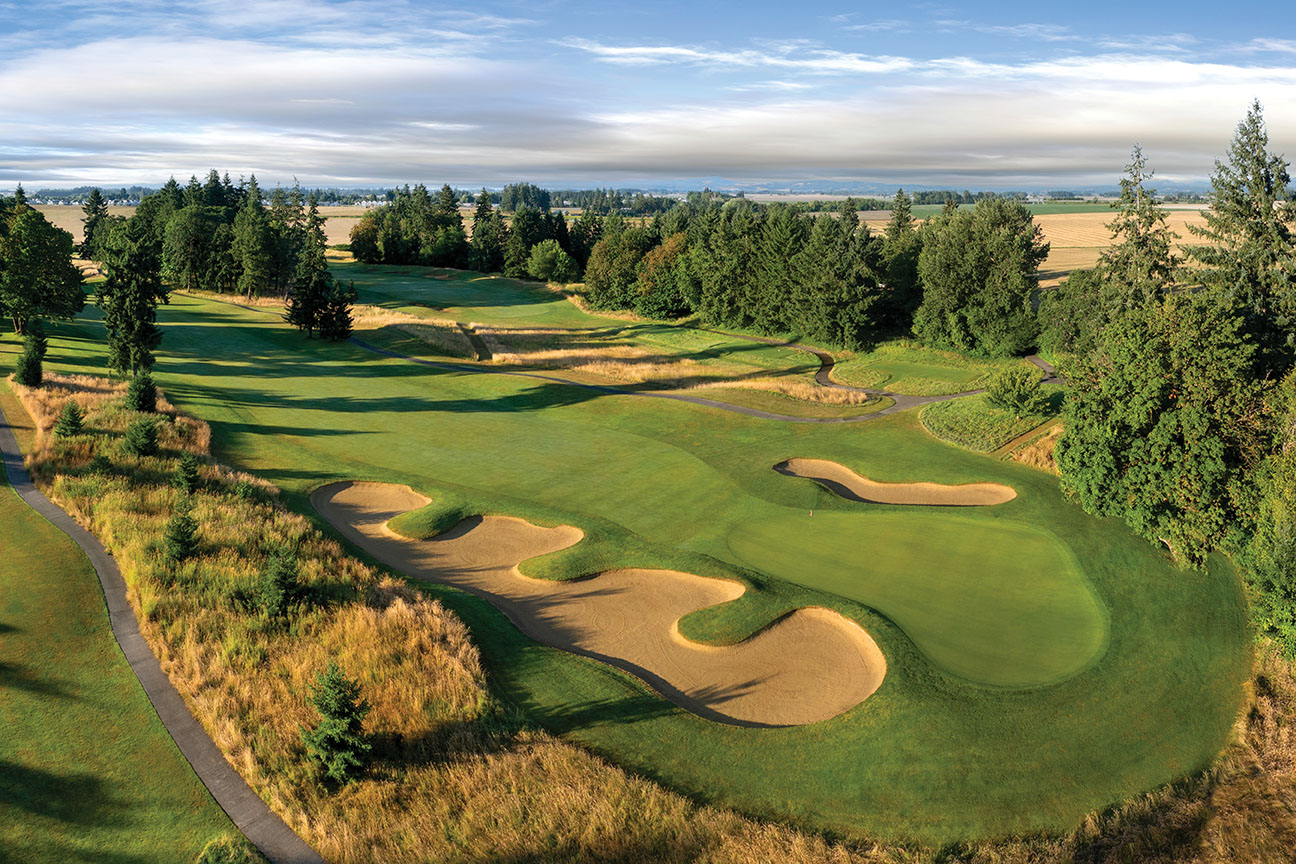
The Reserve, in tropical-sounding Aloha, Oregon, is wider and more forgiving on both the North and South courses – as you’d expect from a Champions tour site. There are plenty of bunkers and some rough, but keep your ball in the fairway and you’ll be able to score.
The South Course, traditionally used for the final round of the Champions event, can stretch to 7,172 yards from the back tees. But the seniors and the Fred Meyer Challenge rarely played from that far, opting instead for the more friendly 6,809 or combo 6,408 yards.
It has more trees and rolling terrain like the adjoining Tualatin Valley. Dozens of deep bunkers are scattered across the John Fought design, and water comes into play on 10, 11 and the 16th hole. When the rough is grown up outside the fairways, straight driving is at a premium – and finding your ball can be a challenge. Perhaps that’s why the Champions Tour always uses caddies.
The North Course provides dramatic contrast to its counterpart at The Reserve. While The South Course’s trees & terrain are pure Willamette Valley, the North Course feels more like Oregon’s coastal dunes. The more expansive, links-style layout features undulating native grass mounds, distinctive shaping, judicious bunkering and formidable greens with short-grass surrounds.
The par-72 course, measuring 3,905 to 6,840 yards, dares players to hit and hold its greens. The signature hole is the unique 459-yard, par-4 17th, where the green is part of a spectacular 43,000-square-foot triple green complex shared by the 1st, 8th, and 17th holes.
Of course, when you finish your round on either course and return your cart, you’re greeted by a huge grass sculpture spelling out The Reserve.
The large Vintage Room Restaurant & Bar highlights the dining options here, including steaks, seafood and local wines.
For a city that prides itself on diversity, that extends to the hotel offerings. One of the most unique within 20 minutes of both Pumpkin Ridge and The Reserve is the Cedartree Hotel, part of the Tualatin Valley. This four-story lodging is built to resemble a traditional Japanese inn.
There is a sake bar in the lobby, the largest and most varied in the Portland area, plus traditional gardens and ponds inside and out, with koi swimming in the water.
You can choose between chopsticks and silverware in the Waterfalls dining hall, with Japanese-language books, newspapers and magazines in the lobby. The spa features traditional soaking tubs – just the right size to wash away bad golf shots and get ready for another round.
An area this close to the Pacific Coast naturally has plenty of fresh seafood, with the Willamette River bisecting part of downtown.
There’s a wide variety of dining options here. To immerse yourself in the laid-back Portland vibe, start at BG’s Food Cartel, which offers 30 food pods ranging from Thai and Mediterranean to Cajun and vegan. Located near City Hall in Beaverton and the sprawling Nike campus, it’s the perfect place to peace out and fill up.
You can try Broder Söder for Swedish and New Nordic cuisine, or Brooklyn Trattoria for Italian.
One relocation guide lists 48 golf courses in the Portland area. And just four hours south is the public golf mecca, Bandon Dunes. But if you want history and hidden gems, head to Tualatin Valley – you’ll find all you need.
For more information, visit www.tualatinvalley.com, www.pumpkinridge.com and www.reservegolf.com.